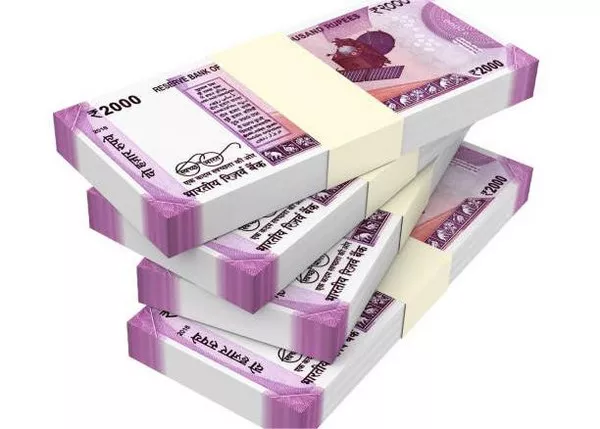The currency of a nation is a testament to its economic history, political evolution, and cultural identity. In the case of India, the journey of its currency is intricately tied to the efforts and vision of one man often referred to as the “Father of Indian Currency.” In this article, we delve into the life and contributions of this significant figure, exploring the historical context of Indian currency and the pivotal role played by its founding architect.
Origins of Indian Currency:
Before delving into the identity of the “Father of Indian Currency,” it is essential to understand the historical context of the currency in the region. India has a rich history of various forms of currency, including coins dating back to ancient civilizations like the Maurya and Gupta empires. However, the modern concept of currency took shape during the British colonial era.
British Influence on Indian Currency:
With the advent of British rule in India, there was a need for a standardized and centralized system of currency. The British East India Company introduced the “Company Rupee” in the early 19th century, and the rupee became the official currency during the British Raj. The initial efforts focused on uniformity and control, with coins bearing the image of ruling British monarchs.
Introduction of Paper Currency:
As trade and commerce expanded, the demand for a more practical and portable form of currency increased. In 1861, the British colonial government introduced paper currency in the form of “Government of India Notes.” These notes were initially issued in denominations of 10, 20, 50, 100, and 1,000 rupees.
The Role of James Braid Taylor:
Often credited as the “Father of Indian Paper Currency,” James Braid Taylor played a crucial role in the establishment of a systematic and secure paper currency system. Taylor, a Scottish economist and a member of the Indian Civil Service, was appointed as the first official Controller of Paper Currency in India in 1862.
Taylor’s Contributions to Indian Currency:
James Braid Taylor’s tenure as the Controller of Paper Currency marked a period of significant reforms and advancements. He introduced standardized designs for banknotes, established security measures to prevent counterfeiting, and worked towards the centralization of currency issuance. Taylor’s efforts laid the foundation for the modern Indian paper currency system.
The Role of Finance Member James Wilson:
While James Braid Taylor made pioneering contributions to Indian paper currency, James Wilson, the Finance Member of the India Council, played a crucial role in shaping monetary policies. Wilson’s efforts in the late 19th century aimed at stabilizing the Indian currency and reducing its dependence on silver.
The Coinage Act of 1906:
One of the key milestones in the evolution of Indian currency was the Coinage Act of 1906. This legislation marked a shift from the silver standard to the gold standard, aligning Indian currency with global monetary practices. The act provided a legal framework for the minting of coins and established the Indian Rupee as the official currency.
The Transition to Decimal Coinage:
The decimalization of Indian currency took place in 1957, with the introduction of a new series of coins and banknotes. The Indian Rupee was divided into 100 paise, providing a more convenient and standardized system. The transition to decimal coinage was a reflection of India’s commitment to modernize its monetary system.
Post-Independence Reforms:
After gaining independence in 1947, India witnessed a series of economic reforms, and the management of currency continued to evolve. The government established the Reserve Bank of India (RBI) as the central banking institution, and various measures were implemented to strengthen the stability and integrity of the Indian Rupee.
The Role of Reserve Bank of India (RBI):
The Reserve Bank of India, established in 1935, emerged as a pivotal institution in the management of Indian currency. As the central bank, the RBI took on the responsibility of issuing currency notes, regulating the money supply, and implementing monetary policies to ensure economic stability.
Key Figures in Post-Independence Era:
In the post-independence era, several key figures have played significant roles in shaping India’s monetary policies. Individuals such as C.D. Deshmukh, I.G. Patel, and Manmohan Singh, who later became the Prime Minister, contributed to the modernization and stability of the Indian currency.
Modern Challenges and Innovations:
In the 21st century, India faces new challenges and opportunities in the realm of currency management. The rise of digital currencies, the advent of cryptocurrency, and the integration of technology into banking are shaping the landscape of modern finance. The Reserve Bank of India continues to adapt to these changes, ensuring the resilience and relevance of the Indian Rupee.
See Also: How RBI Decisions Affect the Indian Rupee?
Conclusion:
The journey of Indian currency is a dynamic narrative that spans centuries, reflecting the economic, political, and cultural evolution of the nation. While James Braid Taylor is often acknowledged as the “Father of Indian Paper Currency,” it is essential to recognize the collective efforts of policymakers, economists, and institutions in shaping and managing the currency of the world’s largest democracy. As India navigates the complexities of the global economy, the legacy of its currency’s founding architects remains embedded in every rupee note and coin, connecting the past, present, and future of this vibrant nation.


